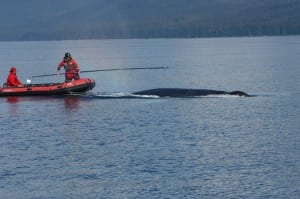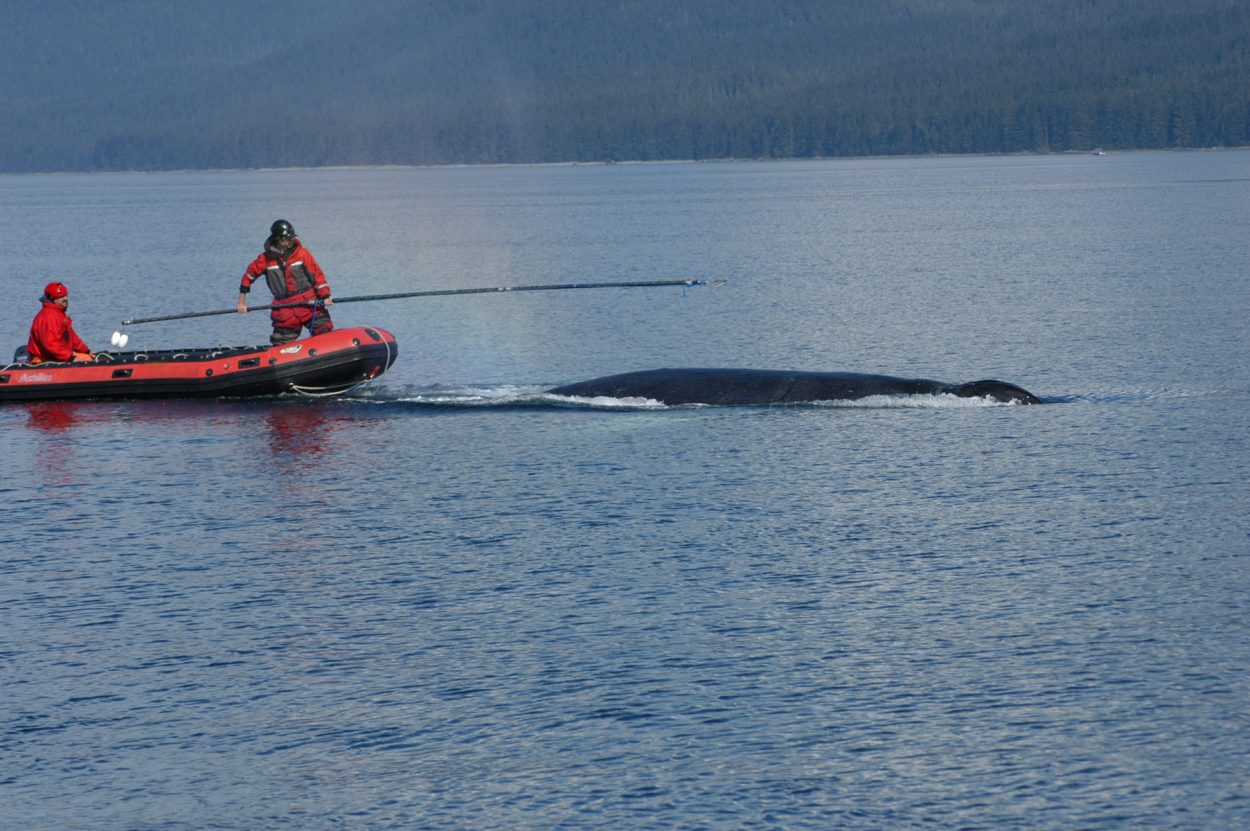Marine mammal responders have wrapped-up efforts to try and disentangle a southeast humpback whale after removing more gillnet from the animal this week. According to the National Oceanic and Atmospheric Administration, the whale’s tail and pectoral fins are free of gear. The agency says it was last seen in “robust condition” and “swimming vigorously” despite a necklace of line that remained behind its blowhole.
Alaska Region Spokesperson Julie Speegle says NOAA’s Juneau response team was out on the water until late in the afternoon Thursday in Chatham Strait near Angoon.
“They were successful in removing some additional gear from the entangled whale. As I understand it, several additional fathoms of netting were removed. And so at this point, the whale still has some netting on it and we’re hoping that it can shed the remaining gear on its own,” said Speegle on Friday.

Alaska Marine Mammal Stranding Network responders John Moran of NOAA Fisheries and Fred Sharpe of the Alaska Whale Foundation. Moran steers the response vessel while Sharpe attempts to cut the netting entangling the humpback whale. Photo credit: Steve Lewis, Chichagof Conservation Council, taken under NMFS permit #932-1905
Specially-trained professionals and volunteers made multiple attempts to free the animal since it first got tangled in a gillnet in Frederick Sound near Petersburg on August 23rd. In a NOAA news release Friday afternoon, Alaska Marine Mammal Stranding Network Coordinator Aleria Jensen was quoted as saying responders had exhausted all appropriate techniques that were available in the very challenging disentanglement effort. According to Jensen, it’s likely that less than 30 fathoms of gear are still trailing from the animal and the entanglement is not immediately life threatening.
Along with removing more netting Thursday, the team also recovered a satellite tracking buoy that Petersburg volunteers had attached to the animal.
A variety of organizations have worked to help the animal including NOAA, The Alaska Whale Foundation, the Petersburg Marine Mammal Center, Alaska Sea Grant, and the Chichagof Conservation Council.










